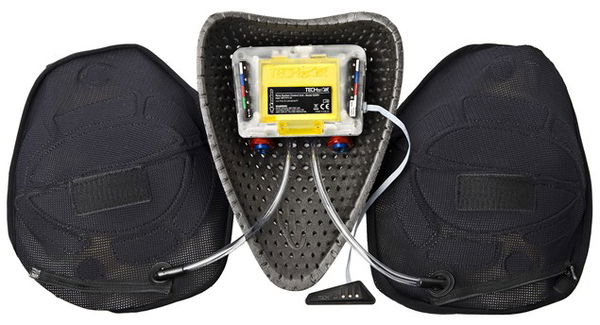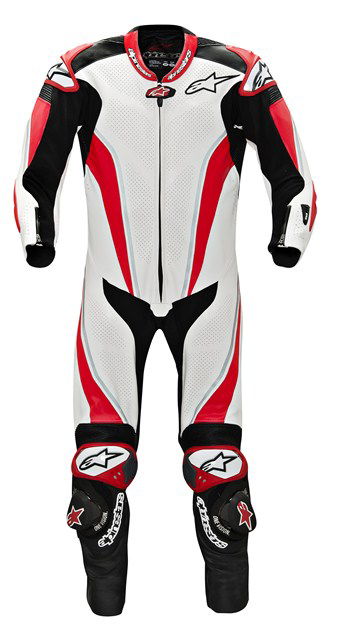
Alpinestars started working on active airbag safety technology for motorcycling in 2001. This project has culminated in the development of a state-of-the-art, electronically operated and completely wireless airbag system which provides an active, yet compact, protection system for Alpinestars athletes in top level road racing, which has now been made available to riders everywhere.
Since its inception, the program has gone through many stages of development with the key milestones being:
• 2001; the creation of a functional, airbag system as a proof of concept.
• 2001 onwards; medical and accident statistical research into injury causes and computer simulation of active prevention covering crucial anatomy most susceptible to crash damage.
• 2003; development of the launch control component and data logging capability.
• 2003; the introduction of analysis tools to scrutinize the large amount of real time data acquired by the highly advanced AST (Alpinestars - Advanced Safety Technology) data logging systems.
• 2004 onwards; ongoing development of the airbag system based on test data, rider feedback and continuous refinement of electronics and sensing components.
• 2009 onwards; testing of the full, active, system with MotoGP and WSBK riders, as well as road riders to fine tune the activation parameters of the airbags for both the racetrack and road.
• 2010 onwards; continually refining the fit and functionality of the device in preparation for commercial launch.
Over the years of testing, a massive amount of real time data has been collected from which complex algorithms have been derived to manage the launch control process, with software optimized for both track and road environments.
John Hopkins became the first Alpinestars rider to use an active data logging system on track at the 2003 German MotoGP and extensive testing and development has continued ever since. By 2007, when Casey Stoner was using the system, the power of the electronics had improved dramatically allowing the recording of various physical inputs which helped create a detailed electronic picture of the dynamic forces involved in riding and most importantly, crashing a motorcycle.
A hugely significant step and one crucial for racing use, was Alpinestars’ development of the now patented dual charge system. This innovation offers the rider two airbag inflations without needing to reset or recharge the system, allowing them to re-mount after a crash and continue riding, safe in the knowledge that the system will give them the same level of protection if they go down a second time.
During the 2010 MotoGP race season, a number of Alpinestars riders were equipped with a fully functional Electronic Airbag System, further testing the monitoring and firing sequences of the equipment and on a number of occasions benefitting from system deployments which protected them during crashes.
For the 2011 race season, the Electronic Airbag program has equipped all Alpinestars MotoGP riders with the Tech Air Airbag System, as well as a number of Alpinestars riders in other championships.
The final phase of the Alpinestars Electronic Airbag program has been the launch of a commercial version of the Tech Air Airbag System which has brought the benefits of active protection to a wider audience and the realization of ten years of research and development.












